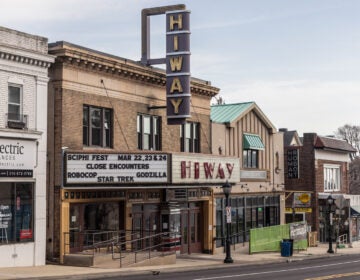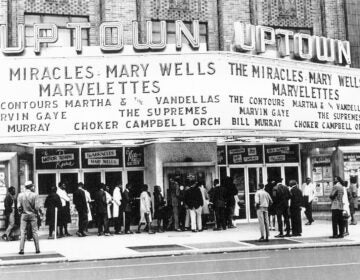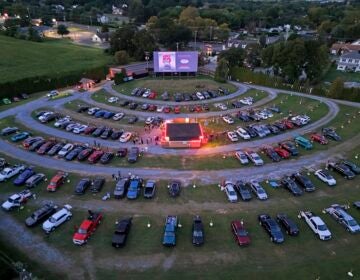The dying art of 35mm cinema: How the Ambler Theater is keeping ‘one of the closest things we have to magic’ alive
From April 12–14, the theater is holding its annual 35mm Film Festival to showcase nine classic features, such as “The Wizard of Oz,” “Evil Dead II” and “Rififi.”
Listen 6:19From Delco to Chesco and Montco to Bucks, what about life in Philly’s suburbs do you want WHYY News to cover? Let us know!
In the upper bowels of the Ambler Theater, Jesse Crooks squats on the ground. Using a combination of muscle memory, meticulous attention to detail and on-the-fly dexterity, he carefully threads a strip of celluloid film through a projector.
“One of the most important things when you’re threading a projector is to make sure it does not touch the ground,” Crooks said.
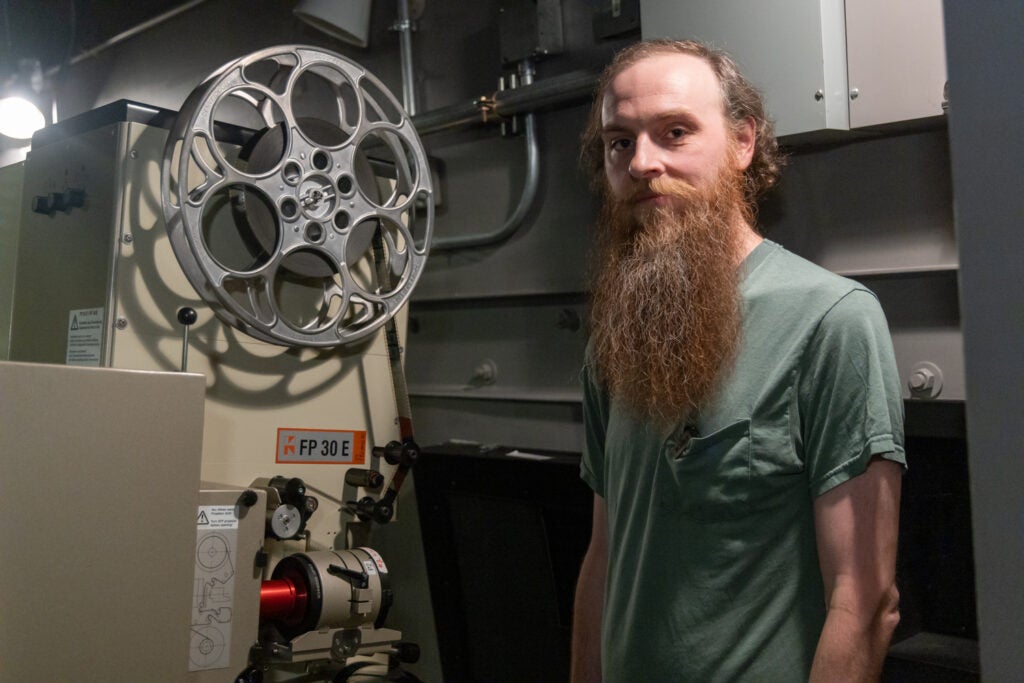
For over a century, the formula for cinema magic remained the same: a trained projectionist, a 35-millimeter film reel and a projector. But now, thousands of feet of celluloid film strips have been replaced with an electronic file — nearly obliterating the role of a trained projectionist.
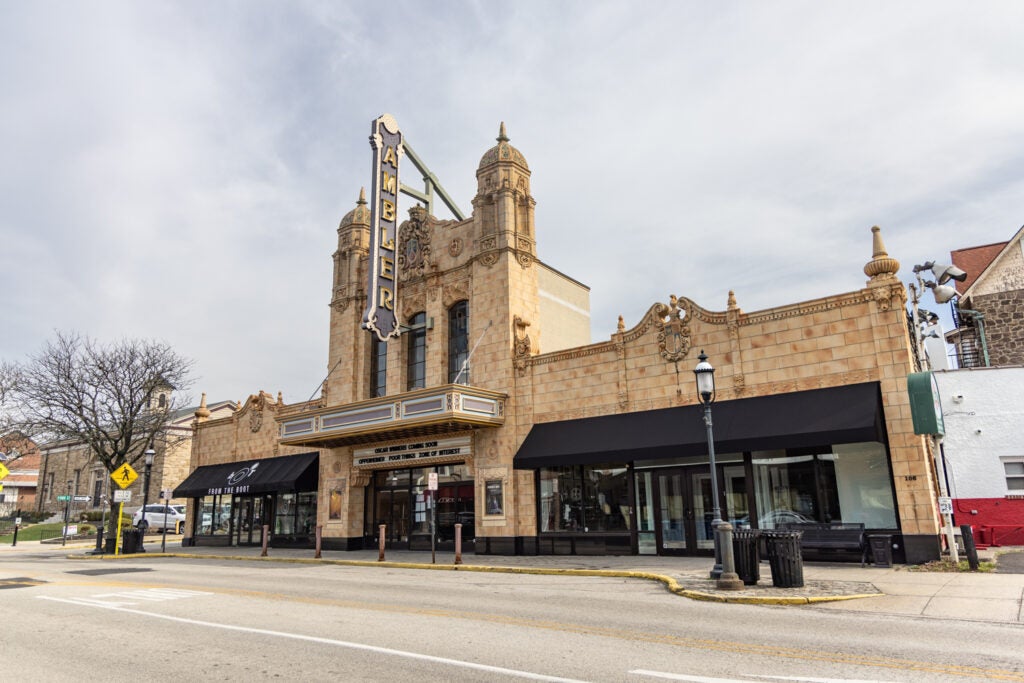
There are only 23 exhibitors in Pennsylvania, New Jersey and Delaware that still have the capability to show analog film. Renew Theaters is the nonprofit theater chain that owns the Amber Theater in Ambler, the County Theater in Doylestown, the Hiway Theater in Jenkintown and the Princeton Garden Theatre in Princeton. Where Crooks works at the Ambler Theater, its crown jewels are its two working 35mm projectors.
From April 12 to April 14, the theater is bringing back its annual 35mm Film Festival to showcase nine classic features, including “The Wizard of Oz,” “Evil Dead II,” “Rififi” and “The Naked City.”

“It’s not just the movies, but we try to bring back the whole history of film and all of the different things that used to be on film,” said Chris Collier, the executive director of Renew Theaters. “We see ourselves here at the theater not just as a movie theater, but as a cinema history museum. So a lot of the content that we’re showing is these custom pre-shows and things before the festival you can’t see in other places. They don’t exist.”
How a small town theater preserves a century of cinema history
Crooks is going to begin with a demonstration of the analog projector.
The projection booth in the Ambler Theater sounds different depending on the day. About once a month, the cinema runs a show on film, but most days, it runs just like an AMC or a Regal.
“When we switched to digital, they’re beautiful machines, but they’re computers and there’s no moving pieces. The only moving piece is a fan that takes the hot air out,” Collier said. “So it is deathly quiet up there when we’re showing.”
The tactile nature is gone. The theater can schedule movies to run ahead of time, like a music playlist.
When Renew Theaters first installed its digital projectors in 2012, Crooks was not surprised — he knew change was coming, but it stung nonetheless. As a joke for future generations, Crooks even listed film projectionist as his profession on his marriage license.
“When we were pulling the film projectors out and putting digital in, I thought that was probably the end,” Crooks said.
Luckily, the theater received a grant from the Vesta Fund to bring film projection back and later pull off its 35mm Film Festival.
Crooks’ official title is director of operations at Renew Theaters, but he is not the only person capable of projecting film. Tiffany Gaal, operations manager at Renew Theaters, has picked up the skill from Crooks.
“Film — physical film is the one of the closest things that we have to magic,” Gaal said.
She compared it to going to an art museum, seeing a painting that’s been preserved and witnessed by others for decades.
“There’s a little something extra with film, because the only way that you can see that piece of art is if someone has maintained and is running a piece of equipment and that you have another person that knows how to put that on screen for you,” Gaal said.
Ambler’s 35mm Film Festival, remembering Lou DiCrescenzo — and the films that time forgot
Renew film programmers Brendan Joyce and Shannon Quinty spend the entire year picking which movies to show at the 35mm Film Festival.
“If you’ve never seen an actual film projected on 35mm — and I feel like there’s an entire generation of people out there that have never seen anything like that before — certainly come out and spend three days with us at the Ambler Theater for that,” Joyce said. “It’s a tremendous experience.”
With 10 programs and nine features, Joyce said this is the biggest festival they’ve organized so far. The Ambler Theater will also be presenting Bruce Goldstein, founder of Rialto Pictures, with an award.
Quinty said the film selection process is difficult, but the outcome is well worth the effort.
“I love that we’re able to work with these archives. Everybody doesn’t get that chance and I think it’s really special that they’ve trusted us with some of these precious films that some of them only have a couple dozen prints available in the world,” Quinty said. “And especially some of our shorts — they might be some of the only existing shorts in the world for all we know.”
This year’s 35mm Film Festival will be special. There will be a tribute to the late Louis DiCrescenzo, who died in January at the age of 71. DiCrescenzo was a local film preservationist and projectionist who donated hundreds of his own prints to the American Film Institute and the Library of Congress.
DiCrescenzo’s legacy is not only significant to both regional and national film preservation efforts, but also to the fabric of the Ambler Theater.
“Over the course of his time, he collected projectors. He collected trailers. He collected feature films, and he squirreled all of this away,” Collier said.
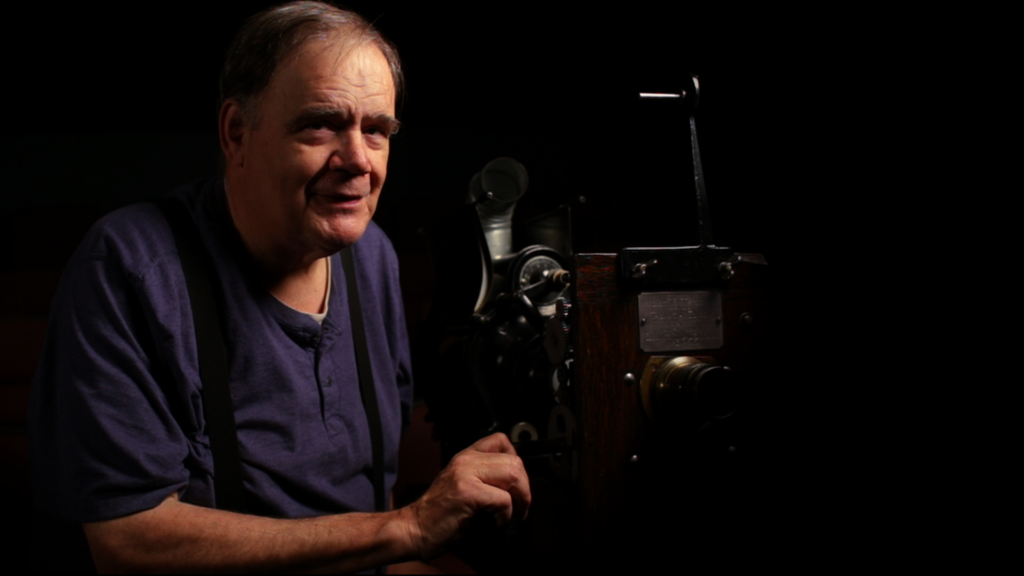
When Disney wanted to remaster their 1940 movie “Fantasia,” the company ran into a problem. It preserved the negatives of the film but not a positive reference. The company called on DiCrescenzo for help. Thanks to DiCrescenzo, the Library of Congress has a print of “Bare Knees” in their collection. He saved the only 35mm nitrate print of the 1928 flapper comedy.
As a member of the last generation of full-time projectionists, Crooks was fortunate enough to run film for six years before Renew Theaters switched to digital in 2012. During those six years, DiCrenscenzo became his mentor.
“Early on it took the form of him providing his film prints to run for special events. So, he’d come in and drop off a load of these amazing short subjects that are just like really obscure weird things that you’d never see anywhere else, lots of beautiful Technicolor, and I got to work with it — and you know, that kind of hooked me,” Crooks said.
Because he was constantly working with DiCrescenzo’s collection, Crooks constantly called him for advice and troubleshooting. Crooks learned something as simple as the correct film splicing technique from him.
Crooks said DiCrescenzo had an “encyclopedic knowledge” of film and was able to identify actors, production companies and the mechanical inner workings of the projector.
“During the pandemic, one of my projects was to restore the projector we have at the Hiway Theater, which hadn’t been used since 2013 and just over the phone — without even looking at it — he would be able to walk me through every single step,” Crooks said.
At the festival this year, Crooks will conduct a live demonstration of how he runs the old school projectors — and pay homage to DiCrescenzo.
“We’re putting together a program in honor of him, and I’m making it like the shows he used to do with us. So, it’s called ‘The Films That Time Forgot,’ which is a long-running series that he used to run back in the day back before as a projectionist,” Crooks said.
There’s a lot of time, money and resources that goes into upkeeping film and the old projectors. Scattered around the Ambler Theater are more than a dozen historic projectors — some from as early as 1909 — which can run film if called into action.
There’s even more disassembled, old projection equipment that Crooks is working to resuscitate.
“We’re trying to do it in such a way that whatever elements are within our control,” Gaal said. “We will try to make it so that audiences 100 years in the future can also still enjoy it.”
Crooks said all of this work culminates into the annual 35mm Film Festival, where the theater can “go all out.”
“It’s the coolest thing we do all year,” Crooks said.

Saturdays just got more interesting.
WHYY is your source for fact-based, in-depth journalism and information. As a nonprofit organization, we rely on financial support from readers like you. Please give today.



